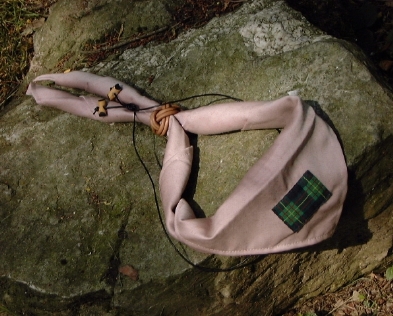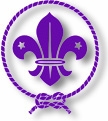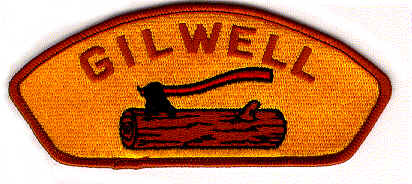|
The Woggle, Beads and Scarf

The three symbols that represent the completion of all the Wood Badge requirements
are the Turks Head Woggle (part 1), and (upon the completion of part 2) the Gilwell Scarf and Wooden Beads (wood badge) on
a leather thong worn around the neck.
Of course there is a long history attached to each symbol.
Briefly, the wooden beads are copies of beads taken from an African chief's
necklace and presented to the first wood badge partipants in 1919 by Baden-Powell. The leather lace represents the good
luck leather thong given to B-P during the Siege at Mafeking. The Turks Head woggle was designed by a staff member at Gilwell
Park in the 1920s and can be taken apart in an emergency to start a campfire. And the red-lined, dove grey kneckerchief with
Maclaren Tartan, represents Gilwell Park where the first course was given. The tartan is a lasting memorial to Mr. DuBois
Maclaren who bought the 55 acres of land known as the Gilwell property and donated it, and the house to the Scout Assocation.
The British Scout Headquarters are now located at Gilwell Park
Scout Associations worldwide adopted the beads, scarf and woggle in
Niagara Falls, Ontario circa 1955, as representing completion of the Wood Badge training.
| Worldwide Scouting Symbol |

|
| This badge is found on every scout uniform |
Upon completion of Woodbadge Part II, scout leaders are presented
with a parchment (certificate), beads and scarf. From that point onward the Scouters are known as Gilwell Scouts or Gilwellians.
The Gilwell Log and Axe Totem

Our Badge Design for the Completion of Part II
|




